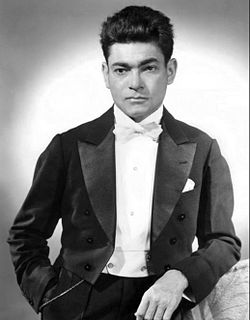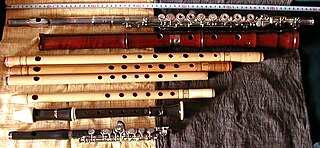
Malcolm Benjamin Graham Christopher Williamson, AO, CBE was an Australian composer. He was the Master of the Queen's Music from 1975 until his death.
John Harris Harbison is an American composer, known for his symphonies, operas, and large choral works.
The Symphony No. 2 in B-flat major, Op. 4, B. 12 was composed by Antonín Dvořák between August and October 1865. Dvořák sent the score to be bound, but could not pay the binder, who kept the score. A friend of his, with whom he was sharing lodgings, Moric Anger, lent Dvořák the money to pay off the binder and retrieve his score. Later, when Anger asked for repayment of the debt, Dvořák was again unable to pay, so Anger took the score as security and only returned it when Dvořák retracted a previous threat to destroy it, something Anger had always advised against. In 1887 Dvořák revised the score, thinning out the rather dense orchestration.
The Symphony No. 6 of Roger Sessions, a symphony written using the twelve-tone technique, was composed in 1966. It was commissioned by the state of New Jersey and the New Jersey Symphony Orchestra. The score carries the dedication: "In celebration of the three hundredth anniversary of the state of New Jersey".
The Symphony No. 4 of Roger Sessions was composed in 1958.
The Symphony No. 5 of Roger Sessions was commissioned in 1960 and completed in 1964. It was commissioned by Eugene Ormandy and the Philadelphia Orchestra, and the first movement only was premiered by them in February 1964, the rest not being completed until that December.

The Symphony in C is a symphony by the French composer Paul Dukas, dedicated to fellow musician Paul Vidal.
The Symphony No. 2 of Roger Sessions was begun in 1944 and completed in 1946.
The Symphony No. 7 of Roger Sessions was written in 1967 for the 150th anniversary of the University of Michigan. It was premiered in Ann Arbor, Michigan, on October 1, 1967, by the Chicago Symphony Orchestra, conducted by Jean Martinon.
The Symphony No. 1 of Roger Sessions is a symphony in three movements, in E minor.
The Symphony No. 8 of Roger Sessions was composed in 1968.
Roger Sessions' Violin Concerto was composed between 1927 and 1935, and is scored for violin and orchestra.
Roger Sessions' Piano Sonata No. 2 was composed in 1946. It has three movements:
- Allegro con fuoco
- Lento
- Misurato e pesante
The Symphony No. 1 by Walter Piston was completed in 1937.
String Quartet No. 4 by Walter Piston is a chamber-music work composed in 1951.

Symphony No. 5, also called Sinfonía para cuerdas is a composition for string orchestra by Carlos Chávez, composed in 1953.
The Symphony No. 3, H. 299, is an orchestral composition by the Czech composer Bohuslav Martinů.
The Concerto for Orchestra is a composition for orchestra by the American composer Roger Sessions. The work was commissioned by the Boston Symphony Orchestra and premiered October 23, 1981, with conductor Seiji Ozawa leading the Boston Symphony Orchestra. The concerto was Sessions's last orchestral composition and won him the 1982 Pulitzer Prize for Music. Sessions had previously won a special lifetime achievement Pulitzer Prize in 1974 "for his life's work as a distinguished American composer." The piece was honored with a performance at the closing of the 50th Tanglewood Music Festival in 2014.
The Symphony No. 9 by Roger Sessions is a symphony in three movements, completed in 1978. A performance lasts about 28 minutes.








